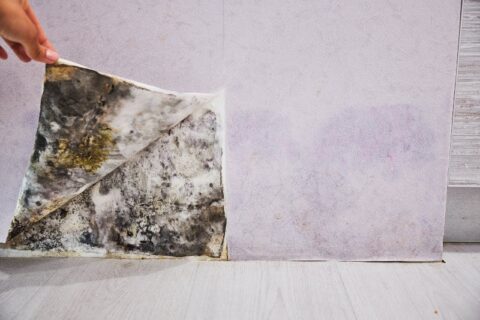How to Tell If Water Damage is Old or New
Discovering water damage in your home can be distressing. The immediate question that comes to mind may be, is this a new leak, or has it been lurking there for a while? Learning the age of the water damage is crucial as it guides your next steps. Here are some handy ways to help you distinguish between old and new water damage and decide on the best course of action.
Inspect the Affected Material
The condition of the affected area often reveals how long ago the water damage took place. Harder materials like brick and tile take their time before manifesting visible signs. If you spot mold or water stains on these items, you can assume the water damage is old. On the other hand, soft materials like drywall or wood display water damage much sooner, so it can be harder to estimate when the water damage occurred by appearance alone.
Check for Lingering Dampness
Place your fingers on the affected spot. Does it feel wet or dry? Old water intrusion has probably dried out by now, though the damage remains, while freshwater intrusion retains its moisture. Additionally, if you press slightly and the material feels mushy, it implies that the water has penetrated deeply. This suggests that the damage started at least a few days ago. A stained-yet-firm material either indicates a very recent leak or residual damage from a resolved issue.
Look for Water Rings
A clear indicator of old water damage is the presence of ring stains on the affected material. When water damage recurs over time, it leaves behind concentric circles of discoloration, much like tree rings. These markings usually indicate intermittent water exposure, often resulting from occasional roof leaks when it rains.
See if You Spot Mold
The presence of mold indicates relatively fresh water damage, usually within two or three days of the incident. If you identify black or white spotty growths resembling powder or velvet, you’re likely dealing with mold. Fresh mold looks bushy due to visible filaments, which grip onto surfaces. In contrast, older mold has a powdery texture and can be brushed off easily. If you suspect mold, prioritize your safety and seek professional assistance.
Addressing Old Water Damage
Just because water damage is old doesn’t mean you’re out of options. Depending on the extent, water damage repair could be feasible. Be mindful that your insurance coverage for such damage varies based on policy details and the source of the damage. Remember, transparency is vital when discussing older water damage with your insurance provider.
Get Professional Guidance
When faced with water damage, whether old or recent, look no further than Pacific Flood Restoration. As a dependable and ethical restoration provider serving San Diego and surrounding areas, we pride ourselves on our punctuality, transparency, and exceptional customer care. Our team has experience with small- and large-scale projects, ensuring our clients receive personalized service. Need assistance? Reach out anytime at 760-815-3033 for a 24-hour emergency response.


